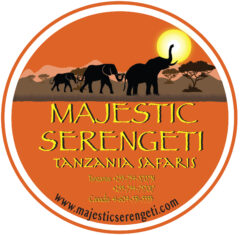
An Overview
Arusha National Park is located near the town of Usa River, about 20 km from the city of Arusha. It is a multi-faceted jewel, often overlooked by safari goers, despite offering the opportunity to explore a diversity of habitats situated within a few hours. You will hear a lot about this park from members of our team because it is located less than 5 km from our head office in the town of Usa River. We like to tell our guests that the park is so close to where we are, we feel like it’s part of our backyard.

Getting there:
An easy 30-minute drive from the city of Arusha (20km) or approximately 45 minutes from Kilimanjaro International Airport (60km), the lakes, forest and Ngurdoto Crater can all be visited in the course of a half-day outing at the beginning or end of an extended northern safari. While at Arusha National Park: You will enjoy forest walks covered with numerous picnic sites.
You can also partake in a three or four-day Mt. Meru climb starting from Arusha National Park. Most people consider this climb a good acclimatization for Kilimanjaro. Best time to visit: Any time of the year. To climb Mt Meru the best time is June-February although it may rain in November. To catch the best views of Kilimanjaro while climbing Mt. Meru is December-February.Best Time to Visit:
Game viewing is at its best during the dry season from June to October.
The park is excellent year round for birding, and especially between November and April when migratory birds from Europe and North Africa are present and the local birds have their breeding plumage on display.
Park Highlights:
Arusha National Park’s highlights can be seen in a single day, and the park is the only park in Tanzania’s northern circuit in which a walking safari is possible.
Outstanding Wildlife Diversity
Due to the varied landscapes that exist within the park, there is an unusually high level of diversity when it comes to wildlife. Not only is the park home to Africa’s largest giraffe population, but visitors can also expect to see water bucks, cape buffalo, elephants, blue monkeys, black and white colobus monkeys, turacos, trogons, and even the occasional lion or leopard in the right conditions.
The park also boasts an incredibly diverse variety of bird-life, making it a popular stop for birding enthusiasts.
Mt. Meru
Africa’s fifth highest mountain cuts a striking figure at 4,566m (14,990 feet). While Kilimanjaro is often shy and hides behind clouds, Mt. Meru is generally visible throughout the year.
Mt. Meru is an active volcano and a popular climbing destination for visitors to Tanzania. It is known widely as a good introductory mountain for those wishing to climb Kilimanjaro. Not only does the climb offer a spectacular view of Kilimanjaro from the summit, but the hike itself is also an incredibly rewarding walking safari that takes you through multiple habitats where you can encounter giraffes, elephants, antelopes, and more
Majestic Serengeti can arrange for a day trip to the park or a short 3-day climb of Mt Meru. 4-day climb package is also offered.
